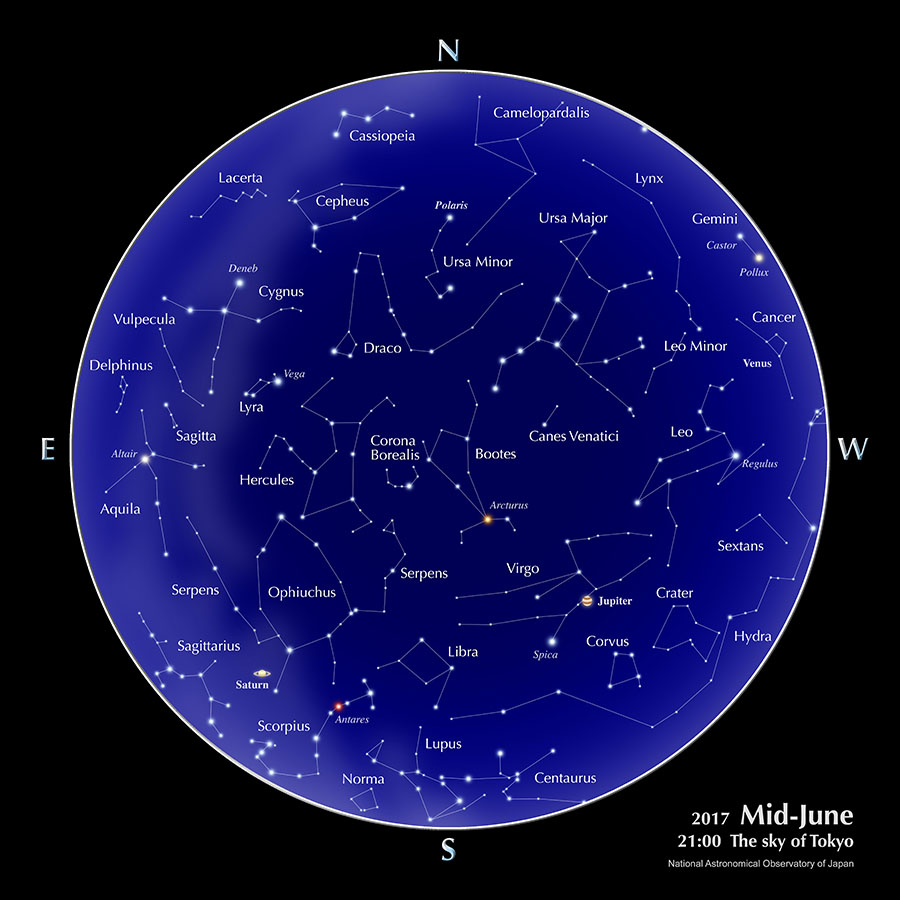The sky of Tokyo, Calendar, Planets (June, 2017)
The sky of Tokyo

Calendar (June)
| 1 | First Quarter Moon |
| 3 | Greatest Western Elongation of Venus |
| 9 | Full Moon (This year’s smallest Full Moon) |
| 10 | Jupiter at stationary point |
| 15 | Saturn at conjunction |
| 17 | Last Quarter Moon / Neptune at stationary point |
| 21 | Mercury at superior conjunction / Summer solstice (Sun’s ecliptic longitude 90°) |
| 24 | New Moon |
The days for the peak activities of the meteor showers are based on the predictions of IMO(International Meteor Organization).
Planets
- Mercury
- From the beginning to the middle of the month, Mercury is positioned low in the eastern sky just before sunrise. Its apparent location is close to the Sun making it unsuited for observation. Mercury reaches superior conjunction on the 21th, after that it is located low in the western sky just after sunset.
- Venus
- Venus shines brightly low in the eastern sky before sunrise. It reaches its greatest western elongation on the 3rd. Its brightness is -4.3 to -4.1 magnitude.
- Mars
- At the beginning of the month, Mars is located in the constellation Taurus and moves east. Within the first part of the month, it moves to the constellation Gemini. It can be seen low in the western sky just after sunset, but its apparent location is close to the Sun, making it unsuited for observation.
- Jupiter
- Located in the constellation Virgo, Jupiter can be seen in the southern to southwestern sky after sunset. Jupiter reaches its stationary point on the 10th; before that it moves slowly to the east (direct motion), and after passing the stationary point it moves to the west (retrograde motion). At the stationary point, it seems to stop with respect to the stars. Its brightness is -2.2 to -2.1 magnitude. June is still a good time to observe Jupiter.
- Saturn
- Located in the constellation Ophiuchus, Saturn reaches conjunction on the 15th. At the beginning of the month it rises in the southeastern sky around 19:30 as seen from Tokyo. At the end of the month it rises before sunset. This is a good time to observe Saturn. Its brightness is 0.1 to 0.0 magnitude.
Source: Ephemeris Computation Office, NAOJ
With the “Sky Viewer” you can easily explore the appearance of a typical urban night sky (planets and constellations are visible). The Celestial Phenomena section of the glossary explains the planetary phenomena terms: greatest elongation, opposition, conjunction, stationary, etc.